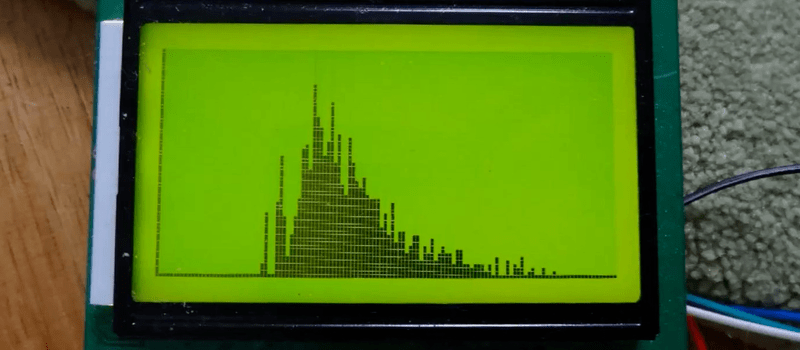We don’t know why [stoppi71] needs to do gamma spectroscopy. We only know that he has made one, including a high-voltage power supply, a photomultiplier tube, and–what else–an Arduino. You also need a scintillation crystal to convert the gamma rays to visible light for the tube to pick up.
He started out using an open source multichannel analyzer (MCA) called Theremino. This connects through a sound card and runs on a PC. However, he wanted to roll his own and did so with some simple circuitry and an Arduino.
The tube detects very faint light in the crystal so they need to be in a light-tight enclosure. The Arduino needs a little help to read the pulses from the tube in the form of a simple circuit. The circuit acts as a peak detector and the peaks last only about twenty microseconds. The post doesn’t have the schematic for the peak detector but the video, seen below, does.
If you want a run down on spectrometer projects, check out Hacklet 122. Admittedly, most of the ones we see rely on visible light.

















What do you mean you don’t know why he needs one!? EVERYONE needs a gamma spectrometer.
I concur ! I wish I had one… I don’t really know why, but I do. At least I could test all my radioactive minerals to know their content.
But I’m not rich, so I don’t have one :D
I’ve been wanting to build a multi-channel analyzer for years. I just haven’t gotten around to it.
That LCD looks really cool. I’m actually looking for a monochrome LCD similar to that one with resolution of at least around 256×176 and size at least 5 inches. Any recommendations? Or actually a character LCD of 40×4 at least would be also fine.
I have a photomultiplier tube, as well as a socket for it, lying in the garage. I’m not sure if it is a good tube though,
Now you need a scintillation crystal.
Not really, if you are strapped for cash you could either make a proportional counter (from cheap stuff like foil and wire) or you could make or obtain a zinc sulphide screen to detect gamma rays or obtain (from somewhere) a piece of plastic scintillator also for alpha rays. In the last 2 cases the easiest configuration would be to make a light tight box with you sample , the PMT and the scintillant inside the box – saves you having to try to make a light proof alpha – lucent film.
Interesting. I’ll drop the obvious here to save you a precious click:
https://en.wikipedia.org/wiki/Gamma_ray_spectrometer
Also:
https://en.wikipedia.org/wiki/Scintillator#Inorganic_crystals
Hmm, so he is counting the peak voltage? Normally you need to count the integral of the pulses off the PMT anode as that is what is ultimately related to the gamma ray energy. Usually you use a differential pulse shaping network to condition the anode pulses into something that is slower and where the peak voltage is proportional to the charge collected. Adding some shaping circuitry would make this actually work, but right now what it is plotting isn’t right.